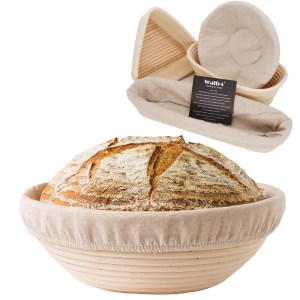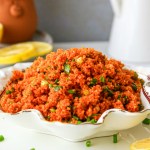Most people are convinced that bread is the first food to be reduced, or even worse, eliminated, from their diet, to achieve and maintain an adequate weight and remove the risk of pathologies. There is nothing more wrong! And the Mediterranean Diet proves it.
Is Bread In The Mediterranean Diet Allowed?
Let’s make it clear right away: bread must be present in a slimming diet, in the right quantities, and above all with the right condiments. Weight gain cannot be attributed solely to the consumption of bread and flour, since what really makes you fat is eating more than you can dispose of with physical activity.
With a complete diet of all nutrients, it is possible to keep weight under control but it is essential that the total caloric intake of meals does not exceed your needs.
To do this you should avoid combining multiple sources of carbohydrates together in the same meal (such as bread and potatoes, or bread and pasta) unless they are small amounts of both sources.
Often it is decided to exclude flour (bread and pasta) for the unfounded fear of gaining weight but no attention is paid to other foods that should really be limited because they are much more caloric, rich in additives, salt or sugar.
What Is The Healthiest Bread
The mold bread would be the least recommended. It contains more fats, sugars and additives so that it stays longer. On the other hand, the healthiest would be the bread that contains more grain and is composed of 100% whole wheat flour.
Organic Bread
To begin with, we prefer organic bread because the cereals at the origin of the bread undergo dozens of phytosanitary treatments. When the cereal is complete, the bran and husk of the seed are preserved.
If the bread is not organically grown, all the seeds whose husk is exposed to pesticides and other synthetic products. In the case of non-wholemeal bread, cereals have fewer pesticide residues but lose their nutritional interests. So we opt for organic and wholemeal bread!
Wholewheat Bread
Unlike white bread, Wholewheat has the advantage of being richer in fiber and thus participates in the regulation of intestinal transit. This richness in fiber gives it a lower glycemic index. Energy is diffused more regularly in the body during the day and without raising blood sugar levels.
It is also a better source of nutrients because the cereals have kept their grains whole, that is, the bran and germ have been preserved. real Wholewheat bread is denser and heavier, unlike lighter and bulkier white bread, a sign of intense kneading and the abuse of enzymes and additives.
Rye Bread
It has the lowest glycemic index with cereal bread (the real one! not white bread with a few seeds). It is a healthy and more nourishing bread than traditional wheat bread. Its nutritional quality is much superior to white bread. Indeed, rye is the cereal containing the most calcium, potassium, and sodium, in addition to being also rich in iron and fluorine. Be careful, rye bread is preferred, it is it that contains the most rye (at least 65%) while rye bread contains only 10 to 30%, the rest being wheat flour.
Gluten-Free Bread
Traditional wheat bread contains gluten, a protein that is not always very digestible for some people. More expensive to buy but interesting on the nutritional and digestive side, there are bread made with alternative flours: buckwheat, corn, rice, chestnut. Industrial gluten-free breads are banned, which, to compensate for the absence of this protein, add food additives, sugar, and fats that are harmful to health.
Wholemeal Bread With Seeds
Sunflower seeds, sesame, or flax bread are very rich in polyunsaturated fatty acids that contribute to good cardiovascular health. Choose it completely, with gray flours rather than white.
Sourdough Bread
Rather than yeast, opt for sourdough bread. The latter produces phytase which releases phytic acid. Considered an anti-nutrient, this molecule naturally present in seeds, especially in the husk, traps certain minerals. To enjoy all the benefits of cereals, choose sourdough bread which has the advantage, in addition to being nutritious, of benefiting from a low glycemic index.
How Much Bread Should I Eat?
The amount of bread one can eat depends on one’s health and weight. If you are overweight, you reduce your portion of bread. The latter provides a significant amount of carbohydrates, so it is necessary to think about balancing it with vegetables or legumes and avoid adding it to other starchy foods (rice, pasta, potato)







